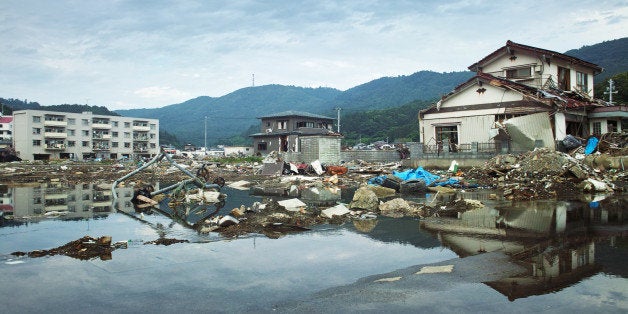
Earthquakes come without warning, making them one of the most feared natural disaster. Startups like Zizmos are working on early-warning systems using IoT (Internet of Things) sensors. Earthquake detection is provided by interconnecting multiple seismic sensors to a central server. The system works by detecting motion close to the earthquake epicenter and transmitting a warning alert to users further away from the epicenter. The system requires a large number of sensors to cover earthquake prone areas. Sensor costs have significantly decreased over the last decade through advances in smart phone and wearable technology, making an earthquake early-warning system affordable.
Japan has experienced many large seismic events in its history and takes earthquake hazards seriously, imposing strict building codes and investing in disaster response personnel. Even then, extensive damage and loss of life occurs with every major Japanese earthquake. After the catastrophic 7.3 magnitude Kyoto earthquake in 1995 with a death toll of 6,434, Japan's government created additional safeguards for its citizens in the form of seismic early warning systems. An earthquake early warning system provides safeguards for industries and people. Industrial activities can be halted before the onset of an earthquake allowing workers to secure sensitive equipment. People can take cover in safe areas preceding an earthquake to help reduce injuries and loss of life.
Today, Japan has the most advanced early warning system in the world. This system has come at a cost of one billion dollars. It is effective, but unfortunately, unaffordable for all but the richest countries. These systems work by deploying highly sensitive sensors near fault lines. These communicate to central servers via satellite, phone, internet, and other communication channels. Zizmos is creating an IoT-based early warning system which will reduce the cost by many orders of magnitude, thereby democratizing this important technology.
Zizmos is a startup that began as a research project at Stanford University funded by the National Science Foundation. Eight years of research went towards finding new technology to mitigate the effects of earthquakes in the world. This research culminated in a solution that uses the internet to connect thousands of earthquake sensors to a cloud-based server. Each sensor has an accelerometer that measures tremors and algorithms that detect earthquakes. When an earthquake is detected a signal is sent to a server in hundredths of a second. Sensor data is aggregated across the individual devices and processed by computational engines to determine where the earthquake epicenter is located and where damaging seismic waves are headed.
The data is used in several ways. First, alerts are delivered to the community with smartphone apps using cloud messaging services provided by Apple and Google. Additionally, information gathered from all of the sensors in a geographical area are analyzed to provide a high-resolution assessment of earthquake damage for first responders in real-time. Damage-assessment maps show relative damage across a community, allowing first responders to service areas that experienced more damage first. The damage maps are sent via email to fire departments within minutes of the earthquake and are downloaded to battery-powered devices in case power is interrupted. This information optimizes the emergency response, sending help where it is needed most.
The Zizmos sensor network can provide up to 90 seconds of warning, depending on the distance between the user and the epicenter. Seismic waves travel at approximately two miles per second; therefore, if you live 30 miles from the epicenter you will receive 15 seconds of warning before the earthquake impacts your location. Users of the alert system will have time to get to safety. Damage to infrastructure and lives can be diminished by shutting down public transportation and factories before tremors arrive.
IoT standalone sensors are augmented by Zizmos smartphone apps (Zizmos eQuake) that are available free-of-charge for iOS and Android. After downloading the app and registering the smartphone, the user is provided early warning based on his or her location. Developers at the company are developing capabilities that will use the smartphone's internal accelerometer and re-task it to act as a seismic sensor. The sensor mode is enabled only while the phone is plugged into a charger to minimize battery consumption, and the sensor mode will only run while on Wi-Fi to avoid carrier service charges.
Over the last 10 years, advances in micro-electro-mechanical systems (MEMS) have driven costs of motion-detection sensors down to less than one dollar. In comparison traditional earthquake sensors costs thousands of dollars. Declining sensor cost is one of the main drivers of Internet of Things technology. The second driver is the ubiquity of internet connectivity that allows the interconnection of the sensors to cloud-based servers. Every second that passes, thousands of messages are sent from the sensors to servers for analytics and alerting. Data scientists are now able to gather data that was previously inaccessible, driving the growth of solutions that make our cities smarter and safer.
The IoT revolution is upon us creating safer environments. Having advanced warning for an impending earthquake will prevent injuries and save lives. Using low-cost sensors, internet connectivity, and cloud-services, Zizmos democratizes the earthquake early warning technology for countries that were previously unable to afford it.